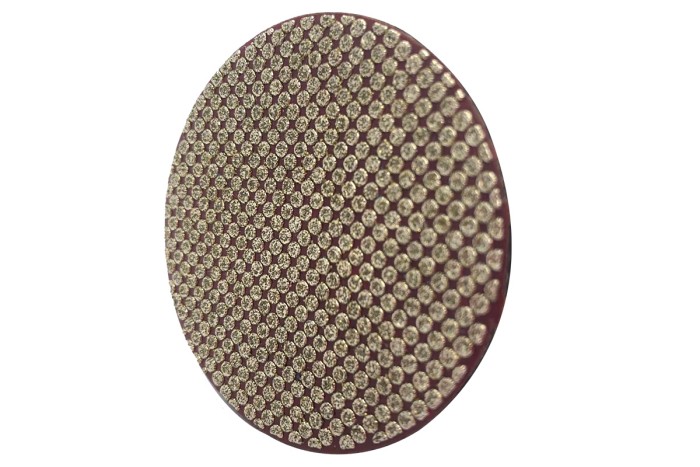Diamond Electroplating Principle
Diamonds have long been prized for their brilliance and beauty. But their remarkable properties extend far beyond aesthetics. Their exceptional hardness, sharpness, and heat dissipation make them ideal for industrial applications, particularly in the realm of cutting and grinding tools. However, simply attaching loose diamonds to a tool wouldn’t be very effective. This is where the ingenious process of diamond electroplating comes into play.
Diamond Power Needs a Secure Hold
Imagine a saw blade where the teeth are made of millions of tiny diamonds! While incredibly effective, simply gluing these diamonds onto the blade wouldn’t be a lasting solution. The diamonds would eventually become dislodged, rendering the blade useless. Diamond electroplating offers a more permanent and reliable approach.
Diamond electroplating borrows the principles of electroplating to create a secure bond between the diamond particles and the metal base of the tool. Here’s a breakdown of the process:
1. Setting the Stage: The metal tool, acting as the cathode, is submerged in a special electrolytic bath. This bath contains a solution with nickel ions and suspended diamond particles.
2. The Electric Attraction: An electrical current is passed through the solution. The positively charged diamond particles are drawn towards the negatively charged metal tool.
3. A Nickel Net: As the diamond particles migrate, nickel ions from the solution also plate onto the tool’s surface. This creates a matrix of nickel essentially embedding the diamonds within it.
4. Controlled Exposure: The electroplating process can be meticulously controlled to ensure that a portion of each diamond particle remains exposed on the surface. This creates a working layer of sharp diamond points that are crucial for cutting and grinding.
The Advantages of a Diamond-Plated Bond
Diamond electroplating offers several advantages over other methods of attaching diamonds to tools:
Strength and Durability: The electroplating process creates a strong and permanent bond between the diamonds and the metal base, preventing them from detaching during use.
Optimal Exposure: By precisely controlling the plating process, manufacturers can ensure that the ideal amount of diamond surface area is exposed. This maximizes the cutting and grinding efficiency of the tool.
Uniform Coverage: Electroplating allows for a more even distribution of diamond particles across the tool’s surface compared to other methods like brazing.
Characteristics of Electroplated Diamond
Electroplated Diamond: A Marriage of Strength and Versatility
Electroplated diamond is a composite material created by attaching diamond particles to a metal base using an electroplating process. This results in a thin film that combines the exceptional hardness and wear resistance of diamonds with the beneficial properties of the metal substrate.
Key Advantages of Electroplated Diamond:
Hardness and Wear Resistance: Inheriting the diamond’s nature, electroplated diamond offers unmatched cutting and grinding performance, especially for hard materials.
Metal Substrate Advantage: Unlike some other diamond products, the presence of the metal substrate broadens the application scope of electroplated diamond. Its conductivity and other properties make it suitable for use in:
Electronic devices
Aerospace manufacturing
Machinery manufacturing
And various other industrial fields
Versatility in Tool Design:
The electroplating process allows for the creation of diamond-coated tools with several advantages:
Complex Shapes: Unlike some attachment methods, electroplating can coat tools with intricate or irregular shapes, expanding design possibilities.
Size and Thickness Variations: Electroplating allows for precise control over the thickness and size of the diamond coating, enabling customization for specific applications.
High Precision: The process offers excellent control over the coating, resulting in highly precise diamond-coated tools.
Enhanced Performance:
Strong Bonding: The electroplating process creates a strong bond between diamonds and the metal base. This ensures the diamond particles remain firmly attached even during demanding use.
Long-Lasting Sharpness: With a significant portion of the diamond particle encased, the risk of chipping or breakage is minimized. This translates to extended tool life and consistent sharpness for improved grinding efficiency.
Nickel is a popular choice for the metal matrix in electroplated diamond due to several reasons:
Strong Bonding: It creates a secure attachment between the diamonds and the substrate.
Encapsulation Ratio: The electroplating process typically encases 1/2 to 2/3 of the diamond particle, providing a good balance between strong bonding and exposed diamond surface for cutting/grinding.
In conclusion, electroplated diamond offers a compelling combination of the diamond’s exceptional hardness and the versatility provided by the metal substrate. This makes it a valuable material for creating high-performance cutting and grinding tools in various industrial applications.
Diamond Electroplating vs. Diamond Sintering
Process Flow:
Electroplating: Simpler and faster. It utilizes an electroplating bath and an electric current to attach diamond particles to a metal base. The equipment is generally less complex and expensive.
Sintering: More complex and demanding. It involves high-temperature and high-pressure environments to bond diamond particles with a metal matrix. The equipment and powder materials required can be costly.
Finished Product Quality:
Electroplating: Offers good wear resistance and a smooth finish. However, the diamond coating is typically thin and can chip or peel off under extreme stress.
Sintering: Produces tools with high diamond density, exceptional hardness, and superior wear resistance. These tools can withstand more demanding applications.
Application Range:
Electroplating: Well-suited for cutting hard but relatively brittle materials like cemented carbide and ceramics. The thin coating allows for finer cuts and smoother finishes.
Sintering: Ideal for creating heavy-duty grinding tools and grinding wheels. The high diamond density and strong bonding make them suitable for aggressive grinding applications on various materials.
Additional Considerations:
Cost: Electroplating is generally less expensive due to its simpler process and lower material requirements.
Tool Complexity: Electroplating allows for coating tools with intricate shapes. Sintering might be limited to simpler shapes due to the high-pressure environment.
Diamond Reclaiming: Electroplated diamonds can sometimes be reclaimed and replated, offering a slight environmental and cost advantage.
Choosing the Right Process:
The most suitable process depends on your specific needs:
For finer cutting and smoother finishes on hard, brittle materials: Electroplating might be a good choice.
For heavy-duty grinding and applications requiring maximum durability: Diamond sintering is likely the better option.
Post time: Jul-19-2024

